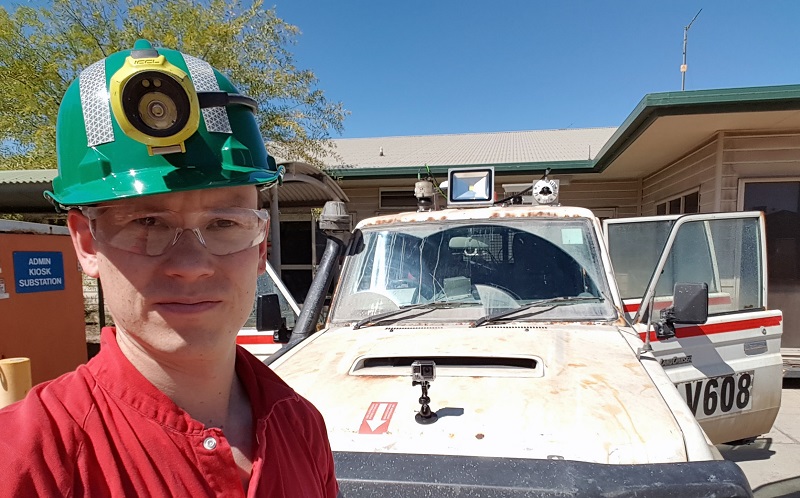
Image credit: Queensland University of Technology
Queensland University of Technology robotics researchers have developed new technology to equip underground mining vehicles to navigate autonomously through dust, camera blur and bad lighting.
Using mathematics and biologically-inspired algorithms, the technology uses vehicle-mounted cameras to track the location of the vehicle in underground tunnels to within metres.
The research has been led by a team from the Australian Centre for Robotic Vision at QUT, including Professor Michael Milford in collaboration with Catepillar, Mining3 and the Queensland Government.
- Autonomous vehicles are increasingly used in the underground mining industry
- Machinery needs to navigate through harsh environment and maze of tunnels
- Mine operators are using costly sensing or infrastructure modifications
- New positioning tech increases efficiency and safety underground
Milford said autonomous vehicles operating in underground mines relied on expensive sensing or infrastructure modifications.
“This is stage one of the project,” he said. “It’s commercially important to be able to track the location of all your mobile assets in an underground mine, especially if you can do it cheaply without needing to install extra infrastructure or use expensive laser sensing. We have developed a positioning system that uses cameras rather than lasers, based on more than a decade of research in biologically-inspired navigation technology.”
The tough terrain means Global Positioning Systems cannot be used and Wireless Sensor Networks are less reliable due to interference from the rock mass and lack of access points.
Milford said the conditions at mine sites were difficult. “It wasn’t all plain sailing for our experiments as the research systems did not work that well when first tested in mine site environments. We had to add some additional intelligence to the technology, to deal with the challenging environment. We developed a system which could intelligently evaluate the usefulness of the images coming in from the camera – and disregard ones that were blurry, dusty, or that were washed out from incoming vehicle lights.”
The researchers have completed two field trips to Australian mine sites and have a third trip later this month.
“This new field trip will enable us to start testing the second stage of the project, a more precise positioning technology,” he said. “If you can track the vehicle’s position to within a few centimetres then you can use that technology to run the vehicle autonomously.”
The research was presented at the Australasian Conference on Robotics and Automation on Dec. 12 in Sydney.
Filed Under: Automotive, Infrastructure




